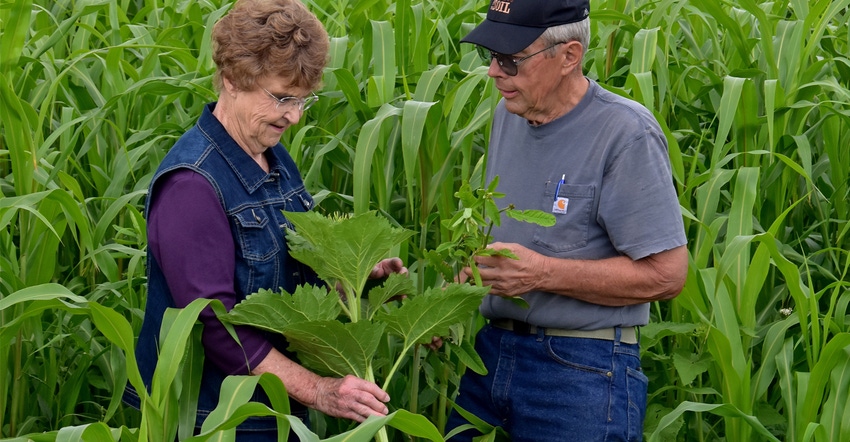November 25, 2020

Improving soil health and building long-term productivity provide multiple benefits including reduced cost of production and improved yield. “Most farmers know where the thin spots are on their farms,” says longtime crop and livestock farmer Paul Ackley. “If they have cattle, that’s where they feed their hay, to try to rebuild their soil.”
Serving as a Taylor County Soil and Water Conservation District commissioner, Ackley has developed what he thinks is an even better way to regenerate poorly producing soils that farmers with livestock might want to try.
Related: Seed summer covers for fall grazing and 'All I needed to know'
When Iowa farmers are getting ready to harvest corn and soybeans, and plant fall cover crops, Ackley is watching his multispecies cover crop grow, to be ready for cattle and sheep grazing beginning in November. Three parts of his system — having a small-grain crop such as wheat in the crop rotation, a multispecies (eight to 10) cover crop mix, and livestock grazing — combine with no-till to regenerate soils more quickly than just seeding single species cover crops.
The system isn’t new to Ackley who farms with wife Nancy near Bedford in southwest Iowa. He’s been using his soil-building management strategy for more than 10 years, watching crop yields and organic matter increase on lower-producing soils. He’s also cut soil erosion, increased soil stability, lowered crop inputs, and furnished protein for his cattle and sheep over the winter.
Building soil organic matter
“No-till and cover crops are important steps to regenerating soils, but if you want to regenerate soils faster, I’ve learned you need to include a small grain in the rotation, seed multispecies cover crops, and graze the land, too,” Ackley says. He includes wheat in his corn-soybean rotation on about one-third of his cropland acres. Winter wheat is drilled in the fall and harvested the following summer in June. The multi-mix cover crop, seeded after wheat harvest, is grazed in fall and early winter.
Cattle and sheep are an important part of Ackley’s conservation focus. Haying and grazing help make cover crops more economically feasible.
The system has worked so well for Ackley that he initiated a resolution for Conservation Districts of Iowa calling for creation of a Soil Builder and Fall Grazer Incentive Program. After unanimous approval by his fellow commissioners on the Taylor County SWCD board, the Boone, Polk and Story county SWCDs joined them to co-sponsor the resolution, asking the Iowa Department of Agriculture and Land Stewardship to provide a one-time incentive payment of $100 per acre for farmers to try the practice on up to 40 acres, targeting thin soils. CDI members approved the resolution at their 2020 annual meeting.
Cover crop cornerstone
Incentives like this should be included in the Environmental Quality Incentives Program and Conservation Stewardship Program, too, Ackley says. “The crop rotations with small grains and four to five years of perennial hay that were so common 60 years ago can still improve soil structure dramatically, and produce healthier soil and better crops today.”
Marketing opportunities for wheat are limited in Iowa so Ackley plants wheat on only about a third of his crop acres. On the two-thirds where wheat isn’t grown in his corn-soybean rotation, a cereal rye cover crop is seeded in the fall after corn and soybean harvest. Thus, all his cropland grows a cover crop.
Adding wheat to his crop rotation helps build soil quality and reduces input costs. Wheat planted in fall acts as a cover crop through winter and spring before it’s harvested in early summer. The wheat crop provides some income, but its main advantage is the early harvest allows Ackley to plant a cover crop mix of species including brassicas, legumes and war- season grasses.
The cover crop is grazed in fall and early winter, and helps build nitrogen and other nutrients in the soil before the field is planted to corn next spring.
Betts writes from Johnston, Iowa.
About the Author(s)
You May Also Like




